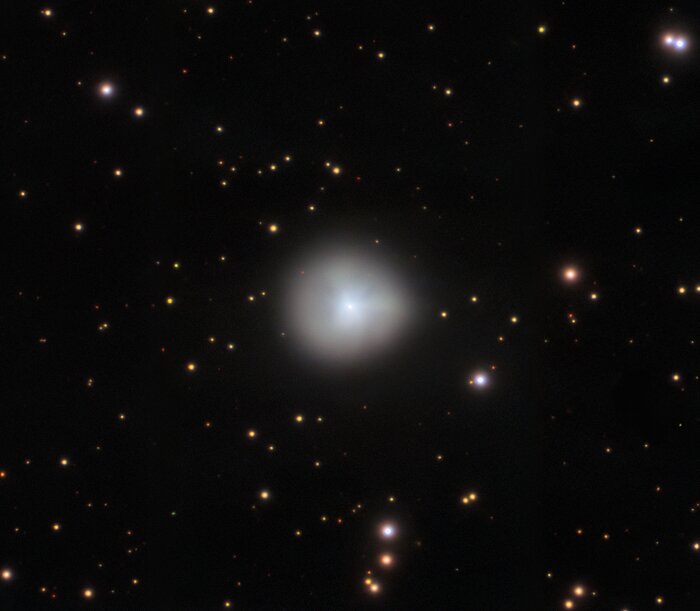The Heart of a Centaur
This Image of the Week features the remarkable Comet 29P, imaged by Gemini North of the international Gemini Observatory, a Program of NSF’s NOIRLab. Comet 29P, also known as Schwassmann-Wachmann 1 after its discoverers, orbits our Sun in a quasi-stable, nearly circular pathway between Jupiter and Saturn. Its orbital path defines it as a member of a relatively new category of Solar System bodies known as centaurs — icy or rocky bodies whose orbits carry them between the giant planets in our Solar System. Centaurs are so-named because they exhibit some characteristics of asteroids and some of comets. So they are hybrid, much like the mythological half man, half horse. Comet 29P is of particular interest, because it has briefly brightened several times per year, before dimming again, an event known as an outburst. These dramatic flare-ups represent a huge release of energy, but their causes are unknown — making Comet 29P especially interesting. This image of Comet 29P is so detailed that this centaur’s bright, dense heart (or nucleus) can be seen through the diffuse cloud of dust and gas (or coma) surrounding it that was emitted during an outburst.
Credit:International Gemini Observatory/NOIRLab/NSF/AURA/C. Schambeau
Image processing: T.A. Rector (University of Alaska Anchorage/NSF NOIRLab), M. Zamani & D. de Martin (NSF NOIRLab)
About the Image
| Id: | iotw2149a |
| Type: | Planetary |
| Release date: | Dec. 8, 2021, noon |
| Size: | 2000 x 1746 px |
About the Object
| Name: | Comet 29P |
| Category: | Solar System |
Wallpapers
Colors & filters
| Band | Wave-length | Tele-scope |
|---|---|---|
| Optical G | 475 nm | Gemini North GMOS-N |
| Optical R | 630 nm | Gemini North GMOS-N |
| Optical I | 780 nm | Gemini North GMOS-N |
